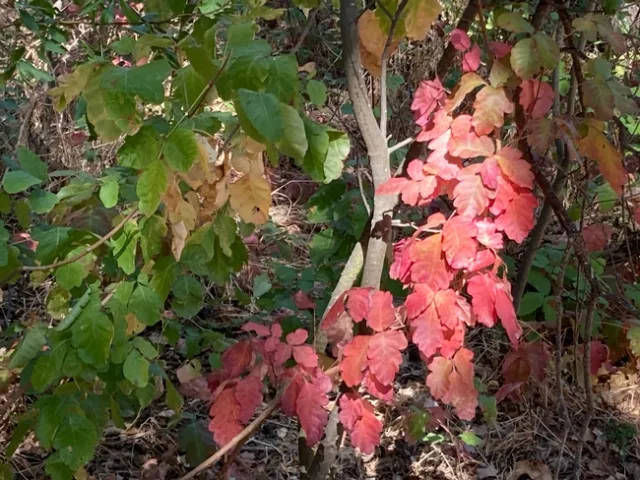Have you noticed the amount of poison oak lately? One of the bike trails in Vacaville that I often walk with my dogs is surrounded by it. Poison oak (Toxicodendron diversilobum) exists throughout a good part of the state minus the desert. Coming into contact with any part of the plant causes contact dermatitis – rash, blisters, and extreme itching. The California Poison Control Center estimates that about 85% of us will react to poison oak when we come in contact with it.
The culprit is a mixture of organic compounds called urushiol that can be found in poison oak, poison ivy, poison sumac, the nut shells of cashews and pistachios, and the rind of the mango. The Chinese lacquer tree also contains the toxin in the tree sap. The nuts are roasted to get rid of the toxin. (Yes, even the “raw” nuts are roasted.) Mangoes are peeled, but people with severe reactions should probably avoid eating them. The lacquer tree's sap is processed to form a hard lacquer that is used for traditional Asian lacquerware.
Poison oak is described as a 1 to 6-foot leafy shrub with glossy green to red leaves that are textured, hairy, resembling oak leaves and in clusters of three. “Leaves of three, let it be” is a common way to remember what it looks like. I have seen it grow a lot taller along the bike trail. While the leaves are usually in groups of three, they can also be found in groups of 5 or 7.

A poison oak rash usually appears within 1 to 3 days and can last 3 weeks or longer. Of course, if you recognize you came in contact with the plant, washing the area with soap and lukewarm water within 30 minutes of exposure will usually prevent you from getting the rash. Cleaning the area with alcohol wipes or rubbing alcohol also works. Launder clothing and don't forget to clean your shoes. If your pet came in contact with the plant and then with you, you could still get it. Pets don't usually get the rash due to their fur, but they will need a bath. Whoever does the deed should wear gloves. Don't forget to wipe off your gardening tools, too.
If you are trying to get rid of the plant, it needs to be dug up entirely. Don't burn it, as even the smoke from the plant is toxic. Fully suit up for the job and once the plant is out, put it in a plastic garbage bag in the gray garbage toter, not the green one. This is also true for oleander and palm fronds. The best advice - Avoid it all together!

